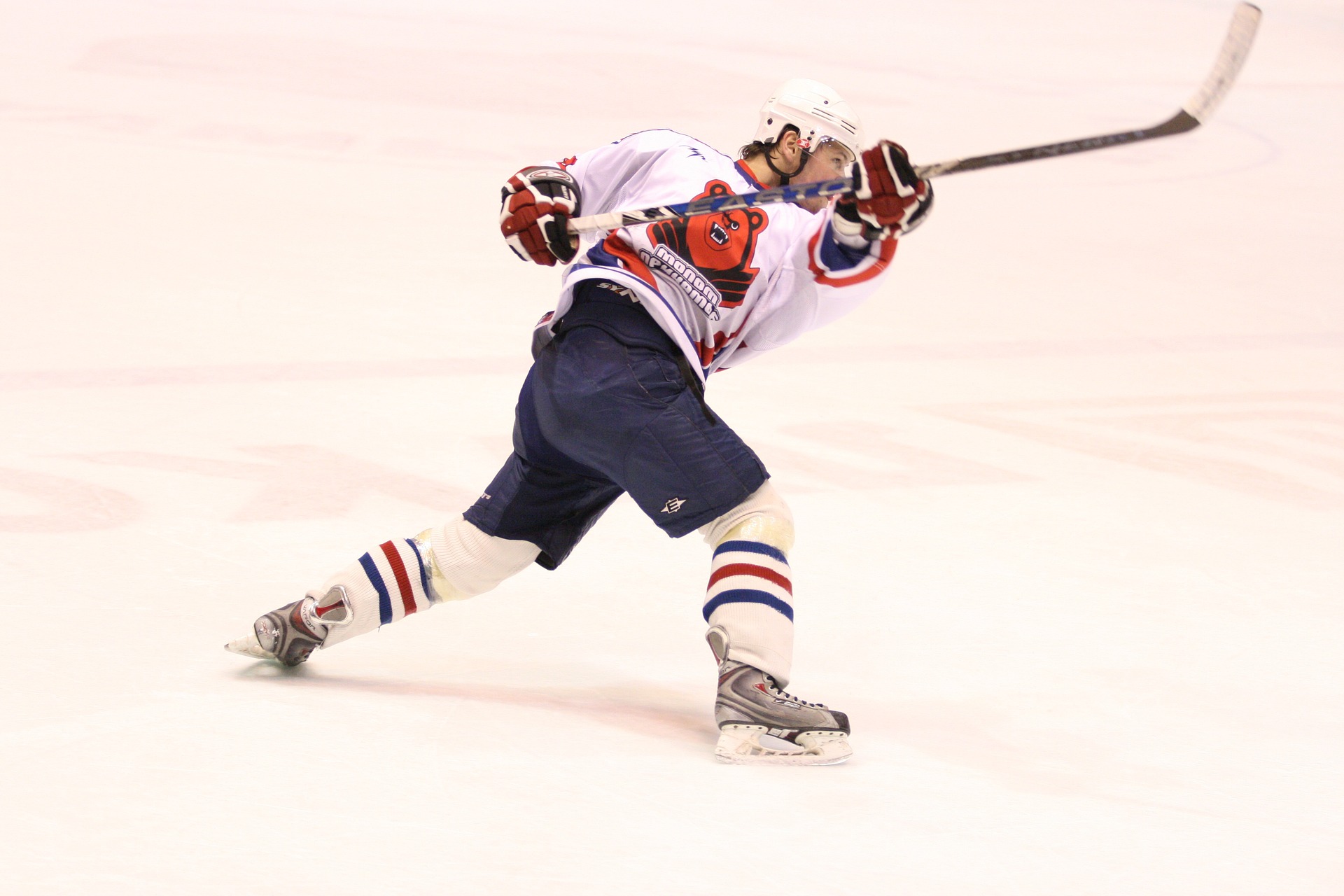
A Guide To Programming as Personal Trainer
It is essential to concentrate on collecting as much information about the sports and their nuanced requirements when a personal trainer starts to train an athlete. The gathered information ensures athletes can be shaped around the sports foundation and the myriad of complex interactions between all elements.
It's not enough to simply add resistance to the movement you observe. Take a hockey slapshot as an example. I've seen plenty of custom setups invented to try and train the slap shot. One particular setup comes to mind – a guy just attached a high pulley to the lower end of a hockey stick, trying to mimic the movement.
In my opinion, this is an inadequate understanding of the sport and the dynamic movements related to the sport as a whole.
As I always say, the athletes' "core" begins from their extremities.
As such, consider the rotational force.
There are few better ways to explore and explain rotational forces than the typical hockey slap shot. Let's start from the beginning:

When you lift the tick to wind up, you extend the arm and the left shoulder, stretching up your torso. In particular, the motion stretches the left shoulder away from your right hip. The stretching motion and the energy involved load up the stretch reflex. You use this energy to pull down your arm, initiating and following through the downward line during the slap shot.
At the top of the swing and during the downward line of the shot, the stick has reduced weight. As such, attaching a pulley to the stick is of no use. During this motion, the rotation force does not come from the weight of the stick (or, in the case of the exercise rig, the attached weight). You have to push down. Instead, the rotational force comes from different muscles working in unison.
The personal Trainer must consider all the different elements of the movement and join them into one seamless movement. This is something many personal trainers and strength coaches don't take into consideration as they innovate strength training setups.
In this example, velocity is the key to improving your slap shot no matter how much resistance you add to the setup. As such, speed-strength, which is moving at high speed while bearing a particular weight, is more important. To improve speed-strength, the load never changes.
As the stick hits the ice, it bends a little. Due to the bend, the stick acts as a slingshot as the player hits the puck's top. In all of this, there is a range of motion in and around your shoulders, back, and peck that your body experiences. Your right arm pulls back as you lift the stick while the left arm pushes upwards.
Which muscles are working?
Antagonist muscles work to slow down the players' swing. The lower back Lats, abs, and external and internal obliques combine to slow the swinging motion. Additionally, the legs aid in improving stabilization. The hamstring controls the knees' stability, while the posterior chain ensures the player holds on during the entirety of the swing.
Improving the slap shot is essential to improving a hockey player's performance. However, if they do not get the puck in the first place, having the perfect slap shot is as good as useless. Luckily, conditioning and improving the muscles used during the slap shot also help hockey players improve their power skating.
So, how does a personal trainer apply this information?
In my opinion, there are three ways you can use this information.
#1. Position
To work on their weaknesses, think of improving their back, core, scapular chain, posterior chain, or any other group of muscles that help them recover from their weaknesses.
#2. Performance
How can a personal trainer make their athlete faster, stronger, powerful? Which exercises will enhance their performance with the highest bang for the buck?
In the case of a slapshot, consider working on speed strength, starting power, explosive strength, and reactive strength.
#3. Progression
Where do I want to take my athlete? What qualities will the athlete need to gain to compete and perform at their optimal capacities?
Be creative. While building the back muscles and excellent posterior chain to optimize springing performance is great, you can do so much more. For instance, you could focus on gaining lean muscle mass to minimize injury risks in combat sports, football, and hockey athletes.
Consider taking the athlete through alternate strength, functional hypertrophy, and hypertrophy. Every aspect of the exercise routine will feed the other, enhancing your athlete's strength and power and making them less prone to injuries. Building muscles is at its core, covering the joints with a protective layer, which benefits athletes participating in high-impact sports.
Strength training not only boosts your power and strength but also diminishes the risk of injury for athletes. Hamstring strain is one of the most common injuries that athletes face.
Epidemiological research and study findings indicate that hamstring injuries account for 6% to 29% of all injuries that athletes in the rugby union, Australian football, cricket, track sprinters, and basketball suffer. Additionally, hamstring injuries have a high rate of reinjury at 13% to 21%.
Specialists in the field suggest that hamstrings injuries primarily occur when athletes achieve peak torque at a shorter length owing to a lack of strength at greater lengths and poor flexibility of the hip flexors. As such, eccentric training is an excellent means of recovering strength deficits occasioned at different lengths of the strength curve. Such interventions consistently yield injury risk reduction among athletes. You can check out our post on Eccentric Training here
Other Sports Considerations
Combat sports and high-impact sports such as rugby or football share considerable similarities. Consider an offensive lineman and a judoka. They are keen on their positional strategy, which could yield advantage or settle the score.

Reactive strength and power and pulling and pushing are common in combat sports. Similarly, a football lineman will use similar strategies, such as grappling for blockages and tackles. In both sports, hand placement is essential in stopping opponents. Additionally, both sports use grabs to attain advantage or enhanced control.
That is Shohei Ono, a top judo fighter. Ono pushes and pulls his opponents, timing his entrances with his opponent's reactions to provoke his opponent to stand up and open up his stance. As he pushes, his opponent also pushes back. During the process, Ono grips the opponent to the inside while flaring the opponent's elbows, affecting his balance.
That's when Ono unleashes the Uchi and loads his opponent on his hips, forcing him to the ground. Display of rotation speed and power.
Wrestling, grappling, and Brazilian Jujitsu, especially among high-level competitors, have a similar starting position as a defensive or offensive lineman. They start by charging forward. The only difference is that the offensive lineman works to break the defense. As such, they must charge through to break the defensive wall. As indicated here, they work to deter one opponent from stopping the other opponents from passing through.
In both cases, the posterior chain is put to hard work. In both cases, the angle of attack is the same.
Additionally, front pushing and pressing exerts the core. As such, the core plays a major role in stopping and redirecting the greater force, changing direction, and decelerating.
The end goal should, therefore, the personal trainer should the choice of exercise and exercise routine. We recommend doing rack pulls, pulls, power cleans and hang cleans, and deadlifts to improve speed or strength.


Mastering lifts with relatable and heavy loads is strenuous. To simplify the process, you could use similar movements, which are similar breakdowns of the lifts.
For wrestling, hockey, and combat sports, unilateral exercises such as split squats, front barbell squats, split jerks, lunges, and many variations must be included. In my routine, I first focus on unilateral exercises and proceed to bilateral work such as pulls, deadlifts, Olympic lifts, and rack pulls.

Carefully putting it all together
For the personal trainer you might think that matching the appropriate strength curve is difficult. However, practicing and lifting, slow-motion reviews and other video analyses will improve your understanding. Evaluate the sport and the top athletes to enhance your knowledge. Work your way out of weaknesses. Improving your strength is particularly effective in protecting yourself from unforeseen injuries.
If you yourself are an athlete looking to get a professional assessment on your sporting requirements you can book in a free assessment with out biomechanical specialist here




